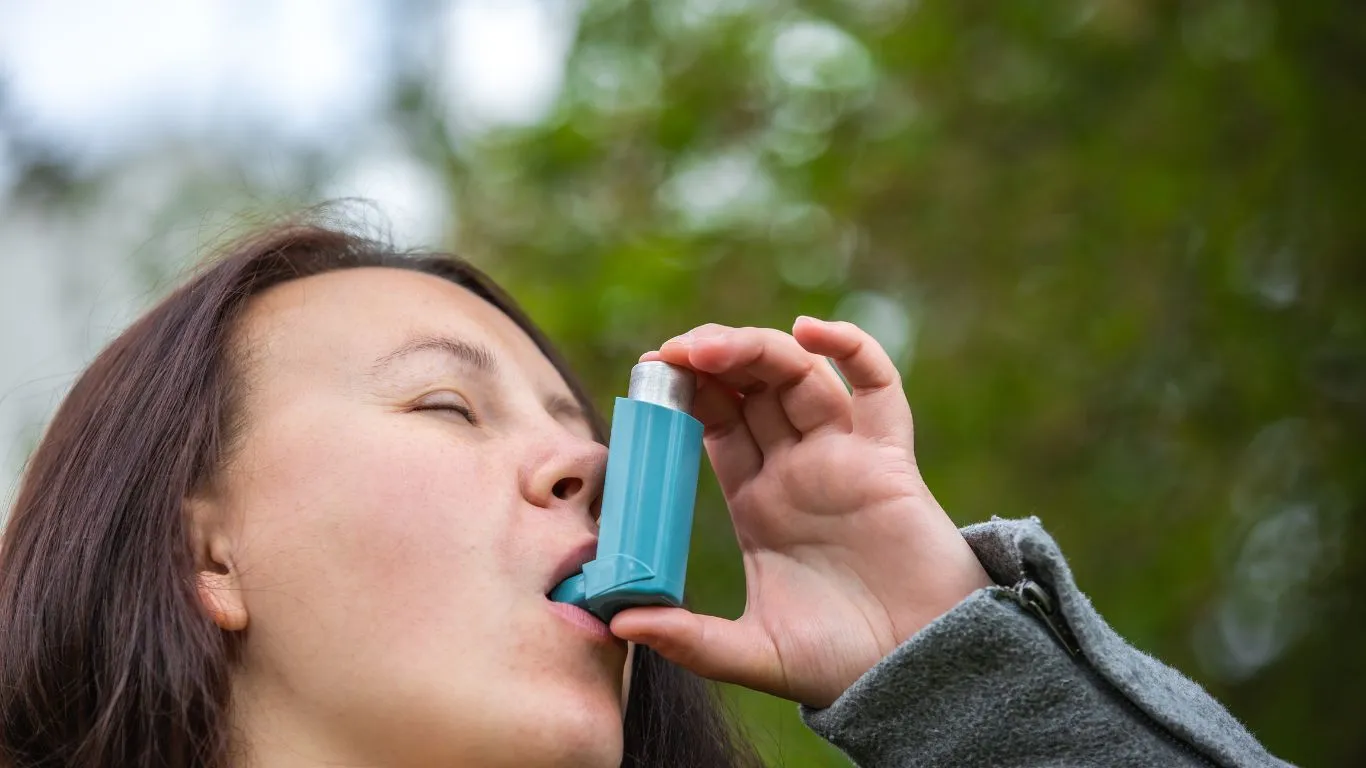Breathe Easier: Asthma Management Tips for High Pollen Season
It’s no secret that spring and summer can be a nightmare if you have asthma—especially during those high pollen days. Trust me, as a pulmonary nurse practitioner, I’ve seen more flare-ups in my clinic during pollen season than I can count. So let’s talk about something super important that often gets overlooked until it’s too late: asthma management during high pollen season. Whether you’re a seasoned asthma warrior or just starting to navigate your diagnosis, understanding how pollen interacts with your lungs is key to staying in control and out of the ER.
Why Pollen Season Wreaks Havoc on Asthma

If you’ve ever walked outside on a sunny, breezy day and suddenly felt tight-chested or short of breath, you’re not alone. Pollen is a sneaky trigger. It floats around like nature’s glitter—harmless to most people, but for those with asthma, it can be like breathing in irritant confetti.
Here’s how it works: When your immune system misidentifies pollen as a harmful invader, it reacts by creating inflammation in the airways. If you already have asthma, that inflammation is like gasoline on a fire. The result? Wheezing, coughing, chest tightness, and even full-blown asthma attacks.
Common Signs You’re Reacting to Pollen
- Increased use of your rescue inhaler
- Frequent coughing, especially at night or early morning
- Chest feeling tight or like you can’t get a full breath
- More mucus production than usual
- Itchy eyes and nose along with your asthma symptoms
Tracking Pollen Like a Pro

One thing I always tell my patients: Get ahead of the pollen, don’t let it get ahead of you. You wouldn’t go out in a snowstorm without boots, right? So don’t head into high pollen season without a solid plan. I personally keep an eye on pollen counts every morning—there are great apps like Pollen.com or even just your weather app can give you a heads up.
High pollen days often mean you should:
- Keep windows closed—yes, even if that breeze feels amazing
- Shower and change clothes after coming in from outside
- Run a HEPA filter in your bedroom
- Reschedule outdoor workouts to later in the evening (pollen levels drop after sunset)
In clinic, I’ve seen patients go from frequent ER visits to zero flare-ups just by tracking and reacting to pollen forecasts. Small changes, big wins.
Medications Matter More During Pollen Season

This might sound obvious, but it’s worth repeating: your asthma meds are not optional during high pollen days. And I’m not just talking about your rescue inhaler. If you’re on a daily controller like an inhaled corticosteroid, you need to be consistent—no skipping doses because you “feel fine.”
Here’s a tip from the trenches: I advise my patients to talk with their provider about starting a “step-up” plan during peak pollen months. That might mean increasing your dose or adding another med temporarily to stay on top of symptoms. It’s all about being proactive, not reactive.
Don’t Forget These Medication Musts:
- Use a spacer with your inhaler for better delivery (especially for corticosteroids)
- Rinse your mouth after inhaling steroid meds to prevent thrush
- Double-check expiration dates—your meds are only helpful if they’re effective
- Keep an extra rescue inhaler in your bag or car just in case
I’ve had patients tell me they “tough it out” because they don’t want to rely on medication. But let me be clear: there’s no bravery in struggling to breathe. Smart management is what keeps you out of crisis.
Lifestyle Tweaks That Make a Big Difference

Alright, let’s talk about the little things that pack a big punch when it comes to asthma management during high pollen season. I’ve seen firsthand that even minor lifestyle adjustments can lead to huge improvements in daily breathing comfort. I’m talking fewer wheezing episodes, better sleep, and more confidence going outside.
For example, one of my patients started vacuuming with a HEPA filter every other day during the spring, and within two weeks, her nighttime coughing stopped completely. Coincidence? Nope. Pollen sticks to everything—your clothes, your couch, even your dog’s fur.
Simple Changes You Can Start Today:
- Switch your HVAC filter to one designed for allergens. And actually change it—don’t wait months.
- Dry laundry indoors during high pollen days. Hanging it outside just collects pollen like a magnet.
- Use nasal rinses or saline sprays to clear out allergens from your nose and sinuses.
- Shower before bed to rinse off the day’s pollen and keep it out of your sheets.
These are tiny adjustments, I know. But stacked together? They create a pollen-proof lifestyle that can seriously reduce your symptoms. I practice what I preach here—during high pollen season, my evening shower isn’t optional. It’s part of my non-negotiable wind-down routine.
Know Your Triggers and Plan Ahead

This one’s personal. I used to think I had my asthma figured out, until one April I ended up wheezing through a hike I thought I could handle. The air was thick with tree pollen, and I’d forgotten to take my controller that morning. Lesson learned the hard way.
Managing asthma in spring isn’t just about reacting—it’s about predicting and prepping. High pollen season doesn’t mean you have to hide indoors, but it does mean being smart with your schedule. For instance, if you love gardening or outdoor workouts, try shifting those activities to early evening or right after rain, when pollen is lower.
Ways to Stay Ahead of Triggers:
- Use a digital or paper planner to track symptom patterns—it’ll help you anticipate flare-ups.
- Download allergy forecast apps and check them like you check the weather.
- Keep an asthma action plan on hand. Seriously, print it out and stick it on the fridge.
- Communicate with your healthcare team. A quick medication review in early spring can set you up for a symptom-free season.
I’ve found that patients who stay one step ahead of their triggers rarely end up in urgent care. It’s not luck—it’s preparation.
Support Systems and Self-Advocacy

This might not be the first thing you think of when managing asthma, but having a strong support system makes a big difference. Whether it’s your partner reminding you to take your meds, or a coworker who understands why you’re avoiding lunchtime walks outside, community support matters more than people realize.
I’ve had patients who felt embarrassed asking for accommodations, like shutting windows in shared offices or taking breaks during outdoor events. But let me say this clearly: your health is worth speaking up for. Asthma isn’t just “a little trouble breathing”—it can be life-threatening if not taken seriously.
Tips for Building a Better Support Network:
- Educate family and close friends about what pollen triggers do to your asthma.
- Talk to your employer about indoor air quality or flexible scheduling during peak pollen months.
- Join local or online asthma support groups—you’ll be surprised how helpful shared experiences can be.
- Work with a healthcare provider who listens and adapts your treatment plan as seasons change.
And from one healthcare professional to anyone reading this—never hesitate to advocate for yourself. You are the expert of your own body. I’ve had patients teach me just as much as I’ve taught them, especially when they’re empowered and informed. That’s real experience-based care, and it works.
Getting Kids and Teens Involved in Asthma Management

If you’ve got little ones—or even teens—with asthma, asthma management during high pollen season can get a little trickier. And as a pulmonary nurse practitioner and a mom, I can tell you firsthand: managing your own asthma is one thing, but helping a child manage theirs? That takes extra patience, teaching, and routine-building.
Kids are often more sensitive to allergens, and they can’t always articulate what they’re feeling. One of my younger patients once told me his chest felt like a “soggy sandwich”—not exactly clinical terminology, but I knew exactly what he meant. Their descriptions may be offbeat, but the symptoms are real.
Tips for Asthma-Proofing for the Young Ones:
- Make inhalers part of the daily routine—like brushing teeth. Consistency builds habit.
- Use sticker charts or phone reminders for controller meds—it makes it more engaging.
- Talk openly about symptoms so they don’t feel scared or embarrassed to speak up.
- Educate teachers, coaches, and caregivers—make sure they have a copy of the action plan.
It’s all about creating structure, trust, and awareness. I always say: if a 6-year-old can name their inhaler and knows when to use it, that’s a parenting and healthcare win.
Natural Remedies: Helpful or Hype?

Now, I get this question in clinic *all the time*—what about natural remedies? I’m not against them, not at all. In fact, I use a few myself. But the key is to treat them as *supplements* to your asthma action plan, not replacements.
For example, steam inhalation with eucalyptus can temporarily soothe your airways. A cup of ginger tea? Sure, it might help with inflammation. But let’s not toss the inhaler because your cousin on Facebook swears by essential oils. You need both: evidence-based medicine and lifestyle add-ons that support your body.
Some Natural Options That Can Complement Your Routine:
- Steam with caution: Helps break up mucus, but avoid if it worsens your symptoms.
- Turmeric and ginger: Anti-inflammatory properties that may help reduce airway irritation.
- Saline nasal rinses: Flush out allergens before they trigger your asthma.
- Air-purifying indoor plants: Like snake plant or peace lily—just be sure you’re not allergic to them!
From a professional standpoint, I recommend combining traditional care with carefully vetted natural support. And of course—always run new remedies by your provider. Just because it’s “natural” doesn’t mean it’s safe for everyone.
Monitoring Progress & Knowing When to Re-Evaluate

This might not be the glamorous part of asthma care, but it’s crucial: tracking your symptoms. I always encourage patients to keep a simple asthma journal or use a mobile app where they can log symptoms, triggers, and medication use. It doesn’t need to be fancy. A few notes each week can uncover major patterns.
I once worked with a teenager who thought their asthma was “fine” because they weren’t wheezing often. But after tracking symptoms, we realized they were waking up at night three times a week. That’s a red flag. Small things can indicate a need for treatment tweaks.
What to Track Weekly:
- Frequency of rescue inhaler use
- Sleep disturbances due to breathing issues
- Changes in activity tolerance (like getting winded faster)
- Peak flow readings, if you use a monitor
Use that data during check-ins with your healthcare provider. It makes your care more targeted and informed. Trust me—this kind of detail helps us help you better.
References
- Asthma and Allergy Foundation of America
- American Lung Association
- Centers for Disease Control and Prevention
- Mayo Clinic
Disclaimer
This article is based on clinical experience and up-to-date guidelines, but it is intended for informational purposes only. It does not substitute for professional medical advice, diagnosis, or treatment. Always consult your healthcare provider before making any changes to your asthma management plan.

Bianca Nala is a compassionate Nurse Practitioner with a strong background in primary and respiratory care. As a health writer for Healthusias.com, she combines her clinical expertise with a talent for clear, relatable storytelling to help readers better understand their health. Bianca focuses on topics like asthma, COPD, chronic cough, and overall lung health, aiming to simplify complex medical topics without losing accuracy. Whether she’s treating patients or writing articles, Bianca is driven by a single goal: making quality healthcare knowledge accessible to everyone.






